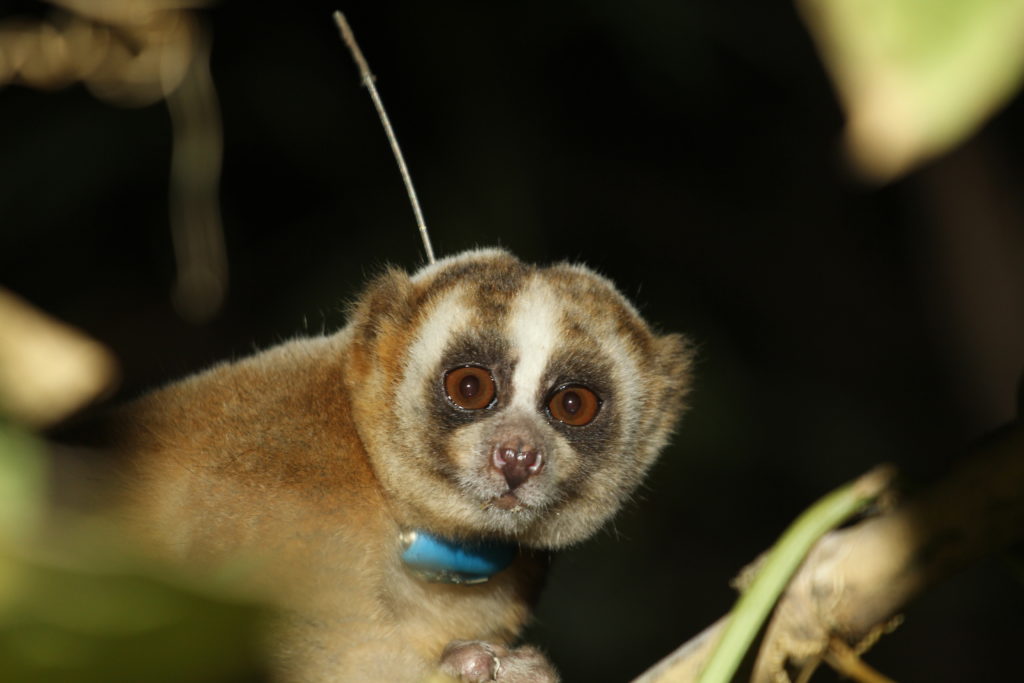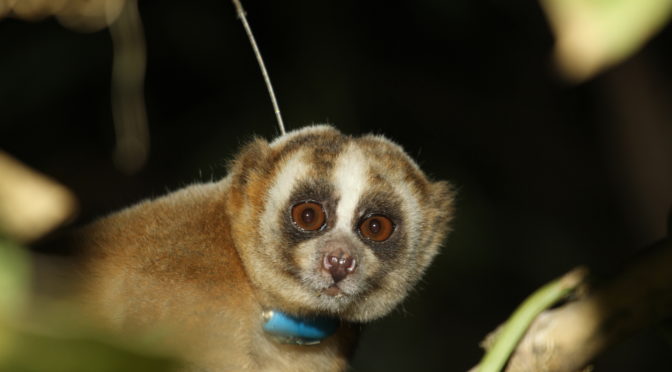Have you ever thought about why slow lorises do not call each other? Or maybe they communicate all the time and we do not hear them! Read about the last research from the Nocturnal Primates Research Group that discovered the ultrasound use by slow lorises!

Oxford Brookes researcher discovers the strategic use of ultrasound by the slow loris in the wild
Professor Anna Nekaris and a team of researchers has conducted the first ever study showing that the wild nocturnal primate, the Javan Slow Loris (Nycticebus javanicus), communicates in pure ultrasound, which is inaudible to the human ear. Before the discovery, it was commonly thought that slow lorises are almost silent. The study involved following the animals throughout their active periods.
The findings have been published in the journal Folia Primatologica (Karger): The Use of Ultrasonic Communication to Maintain Social Cohesion in the Javan Slow Loris (Nycticebus javanicus) The special issue was also edited by Professor Nekaris.
She commented on the impact of the research: “Watching slow lorises in the wild for thousands of hours only making the occasional audible sound, made us wonder how they gathered together for their very frequent social interactions, as well as to gather for sleep. Once we realised they were communicating beyond our hearing, we realised they were chattering away all the time! Specialised software makes the call audible and they sound very much like crickets – another example of the amazing inconspicuous behaviour shown by this increasingly fascinating species.”
Only a handful of primates use ultrasonic vocalisations (around 20 kHz) to communicate, and even fewer communicate in pure ultrasound. The extent and uses of ultrasonic communication has not been fully studied until now.
The team identified one type of ultrasonic call, the doublet click, from 14 Javan slow lorises (Nycticebus javanicus) produced by males and females of juvenile, subadult and adult ages within their social groups. Analysis showed that significantly more vocalisations were produced during friendly social behaviour, suggesting that the call serves to facilitate cohesion among family groups. It was also concluded that the call may also serve as a safety strategy, allowing family members to regulate distance from other slow lorises and to communicate cryptically whilst avoiding predators.
You can learn more about Primate Conservation at Oxford Brookes University.
Oxford Brookes University with Oxford University, is hosting the European Federation of Primatology conference (EFP), between 8 – 11 Sept, 2019.

